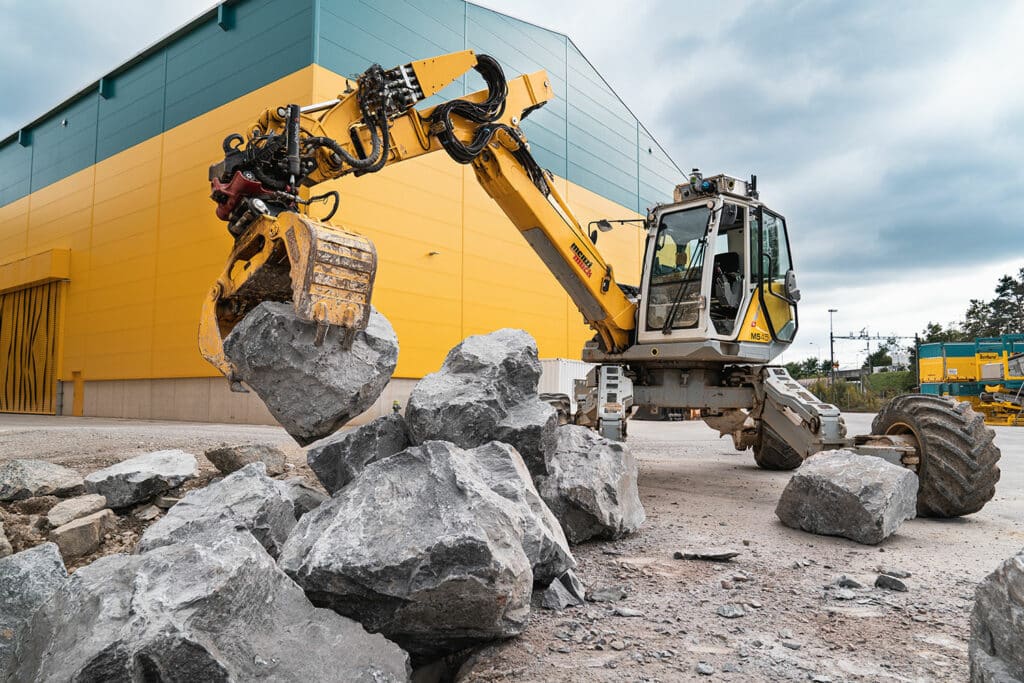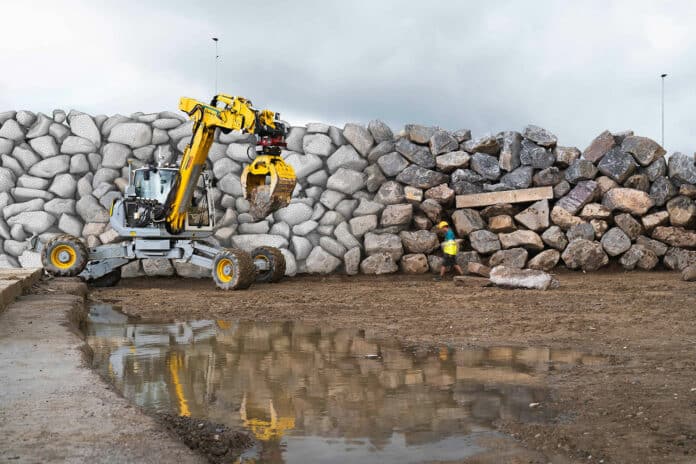The demand and the potential for automation in the construction sector are unmatched, particularly for increasing environmental sustainability, improving worker safety, and reducing the impact of labor shortages.
One of the most challenging tasks in construction is to build a wall from boulders of different shapes and sizes. It demands a lot of physical strength and spatial reasoning. In the future, we might assign this task to robots; in fact, one robot has already accomplished it.
By using automated building processes that enable efficient in situ resource utilization, this robot can construct walls in remote locations while reducing the carbon footprint of conventional building techniques.
The robot is called HEAP (Hydraulic Excavator for an Autonomous Purpose), and it’s a 12-ton Menzi Muck autonomous walking excavator that underwent modifications by a team of ETH Zurich researchers. These modifications included installing a GNSS global positioning system, a chassis-mounted IMU (inertial measurement unit), a control module, and LiDAR sensors in its cabin and excavating arm.

Using sensors, the robotic excavator can autonomously draw a 3D map of the construction site and localize existing boulders weighing several tonnes and demolition debris that had been dumped at the site. The robot then lifted each boulder off the ground and used machine vision technology to estimate its weight and center of gravity, as well as record its three-dimensional shape.
An algorithm has been developed to determine the optimal position for each stone. The excavator then carries out the task by placing the stones in their designated locations.
The autonomous machine can place 20 to 30 stones in a single consignment – about as many as one delivery could supply if outside rocks were being used. The experimental system allows for the use of locally sourced boulders or other building materials, reducing the need to transport materials from other locations.
Building with locally sourced boulders and waste concrete can have a significant positive impact on the environment by reducing the carbon footprint of construction for certain purposes. Although dry-stone masonry walls have traditionally been used for partitions, terracing, and retaining walls, their production, calculation, and verification are complicated, making them less feasible for modern construction.
However, this project showcases how computational methods, machine vision approaches, and new control methods can be effectively integrated to handle the diverse geometric shapes of stones and rubble in an adaptable building process that takes place in an unstructured construction environment.
ETH Zurich researchers demonstrated the process by constructing a freestanding stone wall (10 meters by 1.7 meters by 4 meters) and a permanent retaining wall (65.5 meters by 1.8 meters by 6 meters) integrated with robotically contoured terraces (665 square meters).
The permanent retaining wall at the Circularity Park consists of 938 individual elements (boulders and concrete demolition debris, with an average mass of over 1000 kg each) – placing it among the largest robotically fabricated structures in existence.
This work highlights the potential of autonomous heavy construction vehicles to adaptively build using highly irregular, abundant, and sustainable materials that require little to no transportation and preprocessing.
